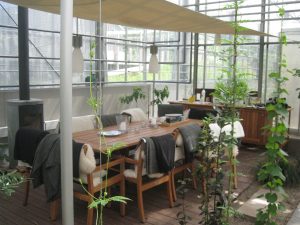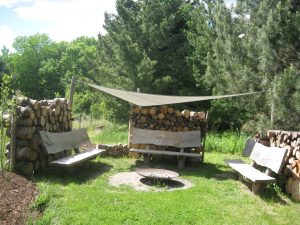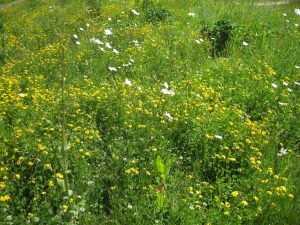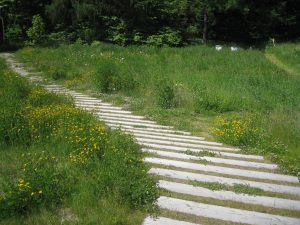Images from Nacadia, a therapy garden at Horsholm Arboretum, Denmark
Gardening is good for you, and it is now official. The use gardening in the treatment of psychiatric patients goes back to the nineteenth century and Thrive and its Scottish Offshoot Trellis have been focusing on horticultural therapy for nearly 40 years. Now a recent commissioned study by the Kings Fund (www.kingsfund.org.uk) has considered all of the evidence for the benefit of gardens and gardening on health and have concluded that gardening has a positive impact on people suffering from various mental health issues, including stress, anxiety and depression. I am writing this blog in Denmark where colleagues at the University of Copenhagen are carrying out active research in this area. They have accumulated evidence to show that even the most serious cases of stress, former soldiers who have developed Post Traumatic Stress Disorder as a result of active service in war zones, can benefit from time spent on a ‘green therapy’ programme based at the tranquil Nacadia arboretum at Holsholm.
Further work supported by the municipality of Kolding in Denmark has focused on a variety of groups including people on long-term sick leave in both the private and public sector and they are using various techniques, including mindfulness training, within the confines of a woodland area to help people get fit for work. HR departments as well as the health service can see the benefit of this approach to getting people back in employment and are supporting the initiative.
What is the mechanism through which gardens and gardening can improve mental health and wellbeing? The New Economics Foundation ‘five ways to wellbeing’ provides the answer. An active gardening programme, like the Edible Gardening Project supported by players of the People’s Postcode Lottery at the RBGE, allows participants to exercise all five ways to wellbeing and therefore help safeguard their mental health in the face of the knocks that life brings. They connect with others in the project, with the public and with their families through bringing home food to share. They are able to take notice of things around them, the seasonal changes and enjoy the anticipation of harvesting and eating the fruits of their labour. There are opportunities to learn from staff and volunteers, and to give to others through the sharing of knowledge and produce. In addition to the social benefits there are also the physical aspects, especially the opportunity to be active in all weathers, and get the exercise and healthy food a body needs.
The current exhibition in the John Hope Gateway, After the Storm, focuses on the positive legacy of storms, like the cyclone that hit Edinburgh and much of Scotland on 3 January 2012. We also want to use this project as a springboard for further work on helping people recover from personal trauma and use contact with green spaces to inspire positive ideas of regeneration, building resilience to face life’s inevitable storms. The Calouste Gulbenkian Foundation, who have been a valuable partner during recent years, have provided some seed funding to develop our involvement in developing this important aspect of our community programme, and Edinburgh and Copenhagen universities have also expressed their interest in becoming involved.
Work-related stress, depression and mental health issues associated with ageing are all on the increase in Scotland. The RBGE on its own may not be able to stem this increase but in partnership with others we aim to contribute towards an understanding of the benefits of gardens and gardening on health and, ultimately, to managed our own precious green space as a sanctuary for those needing an opportunity to recover from personal storms that have disrupted their lives.




